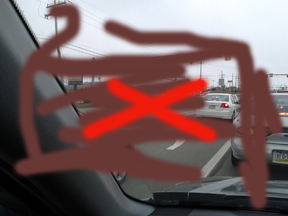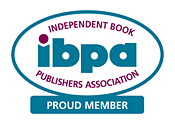Wag The Tail First

When writing a dog novel, start at the end. The final act in writing your book is selling it to a reader, so it is important to know who that reader is, both to guide your writing and for marketing purposes later on. How can you define your anticipated typical reader?
Your target reader will have a specific profile. For a dog book such a profile might include a love of dogs, or perhaps a fondness for a specific breed. It may be that your story appeals more to a male or female audience, or to a specific age group. The target reader may be a member of a particular club or organization, or may be only indirectly drawn to your subject.
The reader profile(s) you define will correlate to groups of humans. These groups will later be the focus for your marketing efforts, but can also guide your writing from the beginning. By following some of these groups on social media and elsewhere you can gain a better appreciation of what interests them. Incorporate this into your writing to more effectively tailor your story for its intended audience.
It is fine to engage on social media, but do not use this platform as a book sales conduit. Rather, consider it an opportunity to get to know more about your future readers. Where and how to incorporate what you learn can largely occur through the process of outlining, described in the next section.
Continue...Outline This Puppy

Once you know who your target reader is, it is time to outline your story. Although many writers create their work without ever outlining, this roadmap is a valuable tool, especially if you think of it as a living outline.
To create the outline, first estimate how long your book will be. Consider similar works by successful authors as a guide. Create a story line, an actual line on a piece of paper, with a start point of zero, and an end point of your estimated page count. Add break points at the half way point, quarter points, and equidistant points in between, for about 16 points. Notate each with a hash mark. These represent important milestones in your story. Some may start or end chapters.
With your blank story line staring you in the face, write in events. It's okay to jump ahead. In your vision the halfway point may be when the St. Bernard rescues the injured beagle, so write it in. What must happen before that? Ideas will pop into your mind unexpectedly, so bring your living outline with you everywhere. A pencil works best.
Before you know it your story line will be filled with events, milestones, and even character appearances and departures. Initially there will be many gaps, but eventually it will fill in. Once it is complete, subject to constant modification, you will have a blueprint of your novel that lets you always know what you are writing towards. It's almost time to write.
Research Like A Bloodhound

These days it seems that research is synonymous with Google, and for many purposes that is sufficient. Sometimes, however, to learn what a dog show is like you have to go to a dog show. While there you must see things, note things, perhaps even take some photos or videos. By talking to people and dogs you will learn even more. This is experiential research, which you can translate into written descriptions within your novel, lending great realism to the reading experience.
The other kind of research, the Google kind, is also very important. You may know a lot about dogs. You may know more about dogs than most dogs. The most important thing to know, however, is that you don't know everything. Often these unknowns exist in the form of nuggets that must be mined from deep within the information mother lode. Seek a morsel or two that would surprise even an expert. Incorporate such details into your story. Accuracy in unexpected details not only lends credibility, but it provides insights to your readers and adds interest to the story.
Experts are another source for research. For any dog book there are expert sources nearby, perhaps as close as your neighborhood. Nearly every region of the country has a dog shelter, club, or other canine organization. Depending on your information needs, consider a visit. Tell them about your project. They may be willing to help your research in unexpected ways. Where appropriate, cite sources.
Write Like A Greyhound

At some point you have enough material to begin writing. With newly researched information and a functional outline in hand, it is time to start writing.
Write fast.
Your first draft will have many mistakes. Fix the occasional spelling error, and if a better grammatical structure occurs to you, by all means change it. Otherwise, let the story quickly pour from your frontal lobe onto the page, then add another page, and keep doing it every day. Stop for the day with a note indicating where you will resume the story in your next session. Word count is important. Not that it indicates quality, but it is a measure of effort, as well as a goal. You may write a thousand worthless words, but if you continue to make the effort things will probably improve. Keep pressing forward.
Some writers achieve several thousand words a day, others far less. It depends on your typing speed, your thought process, and how much time you can commit to your craft. It is surprising how such a goal sometimes succeeds in extracting the next paragraph or page from your brain. In fact, often the decision to write those next 100 words—just to meet the goal—ends with another thousand words of inspired prose. A word of caution: dog dialogue can be especially taxing on a writer.
Keep writing fast until the first draft of your story is finished. Then get ready to change everything.
Edit

Editing is the rinse, repeat part of writing. While your first draft should emerge quickly, each editing pass will be a more deliberative process. At first you will tend to focus on mechanics, and rightly so. The minimum standard for professional writing is error free grammar, usage, and spelling. Getting that right will occupy much of your early editing time, but once most of those kinks are worked out, you will turn to the task of making your writing better. It can almost always be better.
A dog book will have its own set of peculiarities, especially related to canine linguistics. Yes, it's true. Dogs tend to use a lot of slang when chatting, and the presentation of such dialogue can be a challenge. Strive for consistency.
As you work your way through your text for the tenth time, you will find fewer grammatical errors. Edit now with a different principle in mind. Endeavor to find the worst chapter in your manuscript, and make it the best. Find the worst page, and make it the best page. Find the worst sentence, and make it the best sentence.
Lather, rinse, repeat.
When you have done this enough times to believe the work is finished, cut twenty per cent of the words. You will be amazed at how much better you can say the same thing with fewer words. Concise writing is almost always much better. When you are finished, you will know it.
Conclusion

Writing a dog novel is similar to writing a novel based solely on human characters, but with a twist. To truly understand the canine perspective requires wolfish empathy. In addition, research into specific areas of interest can lead to a deeper appreciation for the canine psyche, and incorporating this into your writing will lead to a richer and more realistic presentation.
Beyond the unique facets of canine behavior and communication, the aspiring dog book author operates within the context of book writing. As such, there are principles of novel writing, such as outlining and research, which will foster a timely and successful end product. Applying such principles, along with an appreciation of of dogs, can go a long way towards completing your dog book!
About the Author

Welcome! My name is William R. Vitanyi, owner of Bayla Publishing. The books, apps, and articles on this site are my own, and I created Bayla Publishing, and this site, for their publication.
Why The Human Society? Although it is difficult to say how ideas are formed, in this case I can pinpoint the moment of germination. I was in my car in Erie, Pa., near the Humane Society, waiting for traffic to move. I glanced at the Humane Society building and noticed someone bringing a dog inside, and a human exiting without a pet a moment later. I then noticed the sign for the facility, and a thought occurred to me.
What if a dog saw the same thing, but misread the sign? Might it not appear that this is where dogs go to become human? I found the idea humorous, and thought it would make a funny joke or short story. As traffic started to move the idea was filed away. The incident lasted perhaps twenty seconds.
A couple years later I decided to write a novel using the idea of the Human Society as a premise, and here we are.
About The Human Society
Dogs are often far more intelligent than we realize, and Paps has taken this to a new level. Thanks to time spent in front of a television he can read many human words, and understands a lot about human technology. This gives him a special perspective in his dealings with humans.
As a show dog Paps is treated well, but there is a gap between him and his human pack. One day he misreads a sign, which suggests a way to bridge this gap. This begins a perilous quest to become human by gaining entry to The Human Society building.
Told mainly from the perspective of dogs, canine intelligence is featured in a journey from dog shows to puppy mills and beyond. As with life, The Human Society is part drama, part humor, and is a revelation about the human-canine relationship.
Connect with Bayla Publishing
Connect with William R. Vitanyi
Vitanyi
Follow @vitanyi
To contact the author send email to: Contact William R. Vitanyi
We are a participant in the Amazon Services LLC Associates Program, an affiliate advertising program designed to provide a means for us to earn fees by linking to Amazon.com and affiliated sites.

© 2021 Bayla Publishing LLC